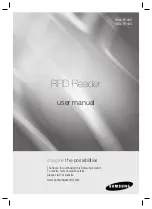
VWS, Manual
Copyright 2016 Vestil Manufacturing Corp.
Page 7 of 10
Lifting and Transporting Loads:
DO NOT operate the
VWS
until you read AND understand every instruction. If you do not understand
an instruction, contact Vestil for clarification. To reduce the possibility of sustaining or causing serious personal
injuries, ALWAYS:
1. Make sure that all other persons clear the area while you use the
stacker
.
2. Apply the fork truck operation and lifting practices learned during your operator training, and applied by your
employer. Follow the instructions below ONLY to the extent that they do not disagree with the operating practices
required by your employer.
Make sure that the net weight to be lifted (load + skid) does not exceed the rated load (capacity) of the stacker;
Center and evenly distribute the load on the forks. The load must not project more than 2” beyond the tips of the forks.
3. Review the safety guidelines on p. 3 before each use:
Apply proper loading techniques;
Ask a coworker to help you load and unload the lifter.
4. “Operator” means a person, who is trained and authorized to use a manually propelled high lift device. ONLY
persons who have successfully completed a training program, like the courses outlined on p.
4-5 of B56.10-2006, should operate the
stacker
. Safe operation requires operators to:
Develop safe working habits and a process for identifying hazards that exist or might be encountered during
operation;
Conduct thorough inspections of the usage area to identify unusual/hazardous conditions. Walk the path you will
use to transport loads with the lifter beforehand. Do not use the
VWS
lift if the floor (or other supporting
surface) is uneven or damaged or cannot support the combined weight of the operator, the lifter and the load.
Make sure that the lifter has been inspected as recommended in the “Inspections & Maintenance” section of this
manual. Use the lifter ONLY IF it is deemed safe to use by designated inspection personnel.
To engage a pallet/skid,
push
the unit to a position in front of the intended load. Before engaging the load, confirm
that the forks will fit within the fork pockets. Fully lower the forks to allow them to slide into the fork pockets of the
skid. Confirm that the net weight of the load plus the skid do not exceed the capacity of the Stacker.
Continue forward until either the skid rests against the back (vertical/upright portion), or the forks are as far
underneath the skid as they can be. When the skid contacts the back of the forks,
lock the brake,
and then
crank the
winch handle to
lift the skid off of the ground/supporting surface
.
Proper Transport Configuration: To avoid unintended contact between the skid/pallet and surface features, transport
the load to the desired location with the forks elevated.
To release the load, stop in the desired location; fully lower the forks; and then
pull the stacker
until the forks are
no longer beneath the skid/pallet.




























